Written by Amanda Jasper, Director of Corporate Communications at NewGround
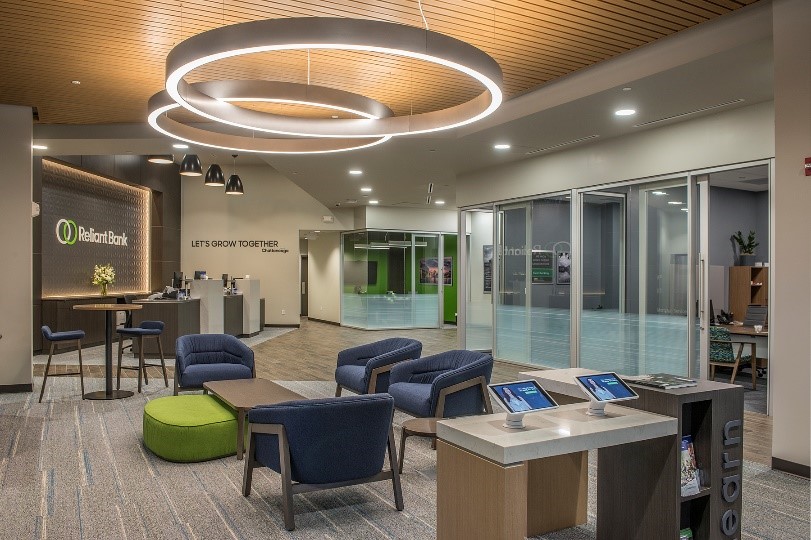
Picture this: your branch system is no longer relevant and lacks technology, which, in turn, no longer attracts consumers. What solutions can help you start transforming your branches? Create a prototype design that all your spaces can be modeled after.
In this first installment of our prototype series, we interviewed NewGround’s Tom Auer, Senior Vice President of Design, and Scott Florini, Vice President of Strategy, to discuss how strategy plays a part when choosing whether prototyping is right for you.
Fundamentals
Before you do anything else, you need to define who you are as an institution.
“The strategic framework around prototype design develops from three fundamental questions that must be answered: Who are you? Who do you want to serve? What do you want to sell? Thus, an
innate understanding of the marketplace, targeted segments, and the internal knowledge and resources needed to build business all collectively inform design,” said Scott Florini, Vice President of Strategy at NewGround.

Since your new experience will be applied to your existing branch system, developing a prototype that eventually is rolled out is more complex. Through comprehensive research and analytics, design is informed and guided by a solid strategic framework and corporate fundamentals.
“Whether the solution is expansion or transforming an existing retail delivery, the real value of market research is the empirical data,” said Scott.
One size does not fit all. Each market and community have a unique combination of consumers, which have unique sets of product and service needs. Due to this, effective prototype design strategy is crucial from the very beginning.
Lead with Strategy
In many instances, organizations are not strategically aligned, causing mixed signals that are conveyed to consumers that visit your facilities.
“The consumer experience ultimately becomes confused and organizational objectives fall short,” said Scott. “The remedy is to develop a strategy and communicate it across the entire organization. A fully aligned organizational strategy developed from the top will ultimately manifest itself in the physical space.”
Diagnostic tools can be used to detect inconsistencies within the organization, top executives, management, and board of directors. In addition, it is important to analyze key market, account, and consumer elements in order to identify needs that will ultimately impact design. This can include the following elements:
Key Market Elements
- Demographic Trends
- Market Share Position
- Prevailing Economic Developments
Key Account / Consumer Elements
- Lifestyle Components
- Technology Usage and Preferences
- Services / Accounts Needs
Design Rules
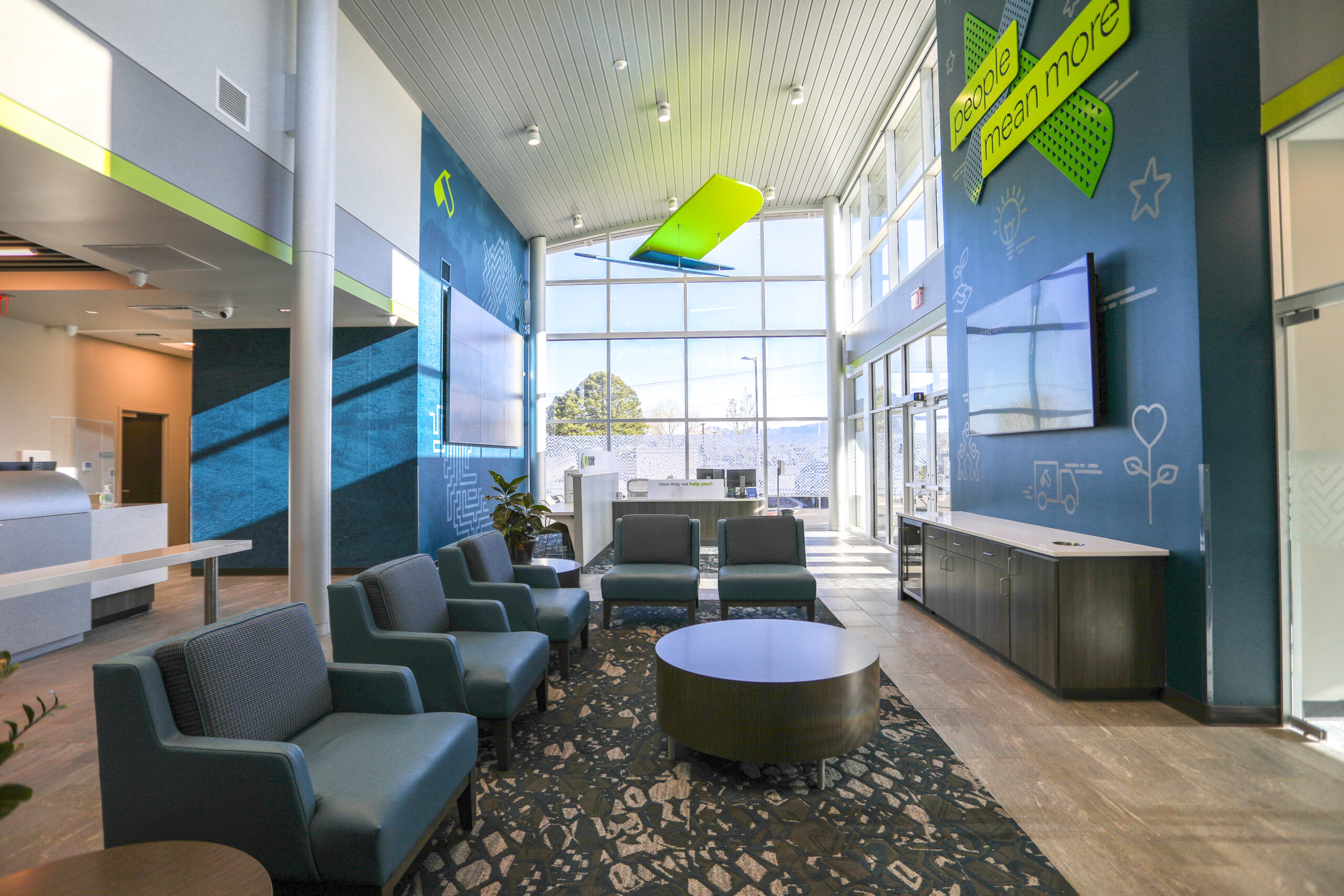
Properly grounded in a sound strategic framework, the prototype should simply be the physical manifestation of your brand. Prototypes should align an organization’s strategic vision with their product and service offering. They can also heavily impact the overall success of the business.
To operate effectively and at scale, retail elements must function as a set group. This predictable arrangement of elements allows for consistent, predictable, and measurable planning, staffing, stocking, and helps with predicting product turn (sales) and profitability.
“As an architect for 33 years, I have been involved in some sort of prototype design for nearly that entire time,” said Tom Auer, Senior Vice President of Design at NewGround. “Early in my career, I found myself working with national retailers of all types, from in-mall retailers like the Limited Stores and The Gap, to big box stores such as Target and Best Buy. Later on, I was intimately involved in the development of May Department Stores under its various badges such as Kaufmann’s and Lord & Taylor, prototypes in their own right. Within these environments, I was also involved in many prototype ‘store within a store’ concepts for brands like Origins, Polo, Tommy Hilfiger, and Levi’s.”
“For the most recent part of my career, I have also had the opportunity to work with some of the world’s largest retail banking brands, developing prototypes and leveraging the muscle they bring to an organization,” said Tom.
Financial service providers are really an ideal vertical to embrace to power of prototype design as it plays into their need to upgrade and transform the consumer experience. They join the legion of retailers desiring a consistent, branded physical environment in which to present their goods and services.
The Power of the Prototype
Why are prototypes important? For starters, they influence many elements of the overall design and impact numerous factors, whether it is for financial institutions or even retail.
“When I was in the trenches at the May Department Stores Company, I learned quite a bit about how to merchandise a department store and the nuances of every aspect of fixture design, product display, product turn, and sales per square foot,” said Tom.
One example? Men’s belts.
“The typical men’s belt fixture held 96 belts total. The fixture itself took up 3 square feet. With the necessary circulation around the fixture, it consumed 27.5 precious square feet. The fixture had a turn rate of 3, which is to say that the 96 belts sold out, on average, 3 times each year for a total of 288 belts. If the average belt price sold for $40, the total annual sales for that fixture was $11,520. This resulted in sales of approximately $419 per square foot,” said Tom.
Every product and every fixture had this information analyzed and scrutinized over and over until the sales floor was as efficient as possible. One could even predict the sales impact of turning the men’s belt fixture 90 degrees to the main aisle. Why? Because it was done and measured many times.
With this information, May was able to adjust their prototype model, test, tweak, re-test, and ultimately implement new store designs, store layouts, and product mix.
Back to Banking
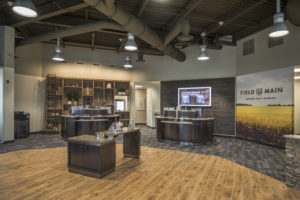
In the development of a prototype, one of the strategic questions that needs to be answered is: what do you want to sell? Your offering should be the alignment of what you are good at with what the targeted consumers you are trying to serve need. Once this is answered, the objective of the design team is to then create a retail experience that showcases your offering within the physical branch. This informs both environmental graphics and retail communications within the branch as well as defining how much floor space you need to allocate. You also must consider what happens when you rotate your “belt rack.” Will anything you do impact sales, and if so, how?
“The list of benefits of prototype design is long and impacts all aspects of your organization. Knowing many of the factors in advance that challenge an organization with deciding whether to proceed with a project or not is a powerful argument for prototypes. The fact that a prototype can be a predictor of performance may be the single most compelling argument for their development and deployment,” said Tom.
Of course, banking products and the environments in which they are presented are more complex then men’s belts or most other tangible, store bought, retail items.
“With financial services, you are by and large selling the unseen. You do not walk out of the bank with a gift-wrapped mortgage; however, the mortgage is linked to the physical house,” said Tom. “Trusting your bank with your retirement funds does not lead to instant gratification, but rather a vision of future prosperity.”
So while there are similarities between retailers, it is prudent to identify the differences. Banks and credit unions are there for the big milestones in our lives, such as purchasing a home, borrowing money to grow your business, getting married, or combining assets. One of the key strategic questions all financial service providers need to ask themselves is: what product and services are you good at? Once that is defined, the design solution should bring those products and services to life within the environment, we call it “Inging the Thing.” These strategically selected retail points of experience will become the foundational elements in your Kit of Parts rollout cookbook.
Kit of Parts
Prototypes give us the ability to test strategies regarding products, staffing, consumer interaction and the physical environment. This is largely done with an established Kit of Parts – elements developed as part of the prototype design that have a consistent and positive impact on overall goals.
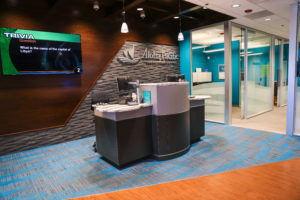
“Once the desired consumer experience has been mapped out and the individual interaction points of experience identified, specific and targeted design elements, along with visual communications, create an environment that makes products and services accessible and fun to explore,” said Tom.
Brand consistency is key. Once an organization has developed the proper Kit of Parts for their organization, they naturally want to repeat these elements in a similar order in new and legacy locations. This formula for success becomes as much of your brand as your name and logo and become part of your brand promise.
“When I hear the word, ‘prototype,’ I instantly think of brand consistency,” said Scott. “A Kit of Parts can bring consistent elements and brand throughout your entire system. This is especially important in mergers and acquisitions or when you’re rebranding. No matter how large or small the space may be, financial institutions need their branches to look cohesive to reflect their brand.”
The concept of a prototype can manifest itself into strategic marketing. Even high-performing institutions have legacy sites that are antiquated, lack technology, and are in desperate need of transformation. Financial institutions should seek a partner that has extensive experience in developing prototypes and then rolling the Kit of Parts out across existing legacy sites.
Best Practices
Strategy development is a collaborative process that engages all stakeholders. Through this process, the organization aligns behind the global strategy.
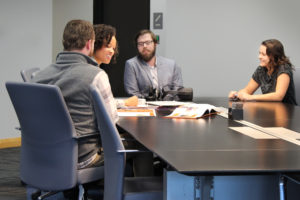 Communicating with various levels of staff helps to strategically understand current issues, creating ideas that can drive the prototype going forward.
Communicating with various levels of staff helps to strategically understand current issues, creating ideas that can drive the prototype going forward.
“You must ‘marinate your head’ in relevant information and get to know the client at a native level. It’s important to try and put yourself in their shoes to help them through the challenges they are facing,” said Scott.
Concepts for design and environmental communication exist all around the business world. Trends, best practices, and other non-financial retail experiences should also be considered.
“Though monitoring direct competition is important, we encourage organizations to study other industries for inspiration,” said Scott. “For example, the financial services industry can learn a great deal from retail and hospitality. Don’t be afraid to look and see what the rest of the world is doing.”
To summarize, three primary steps will advance the design process and equip the organization for success throughout the branch system.
- Conduct Diagnostics
- Align the Organization
- Develop a Fundamental Strategy that Informs Design
Without solid strategy, the impact of your prototype will not be as effective. Strategy informs design. In our next installment of our prototype series, we will explore how strategic design and methodology brings innovation to prototyping.